Sputnik makes another stop on its visual cities’ tour across the globe. After Pyongyang, Shanghai, Tehran and St.Petersburg we invite you to Bern.
Bern is the de facto capital of the Swiss Confederation. Situated within a loop of the Aare River, the city is the educational, administrative, transportation and industrial center of Switzerland. It is also known for its medieval architectural style and is a popular tourist destination. So if you are planning a European vacation, Bern is a must-visit city to see the beauty and the grandeur of Old Europe.
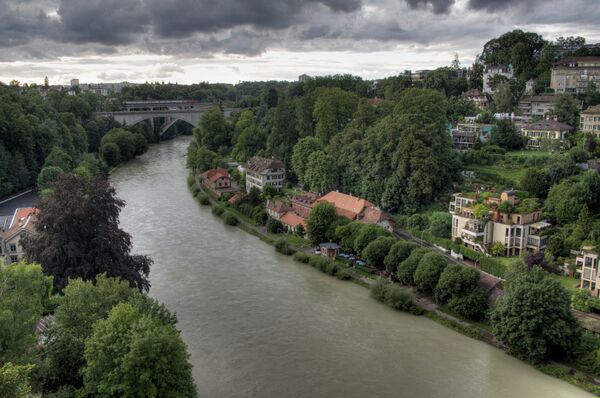
Bern is the fourth most-populated city in Switzerland. As of February 2015, it has a population of more than 139,000. Bern is also the capital of the Canton Bern, the second most populous canton in Switzerland. The official language of Bern is German (81 percent of the population). It is followed by Italian and French. Bern consistently ranks amongst the top cities to live worldwide for quality of life and safety.
Above: A view of Bern, Switzerland.
Above: A view of Bern, Switzerland.
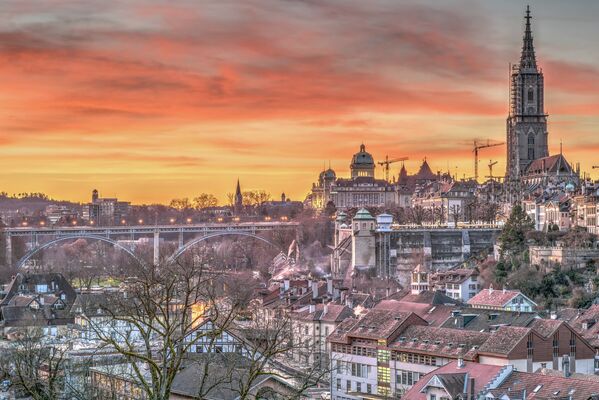
Bern’s official title is Bundesstadt (Federal City), rather than Haupstadt (capital city). Switzerland has no de jure capital but since 1848 Bern has been the seat of the Federal Parliament and government, so it is the de facto capital.
Above: A view of Bern, Switzerland.
Above: A view of Bern, Switzerland.
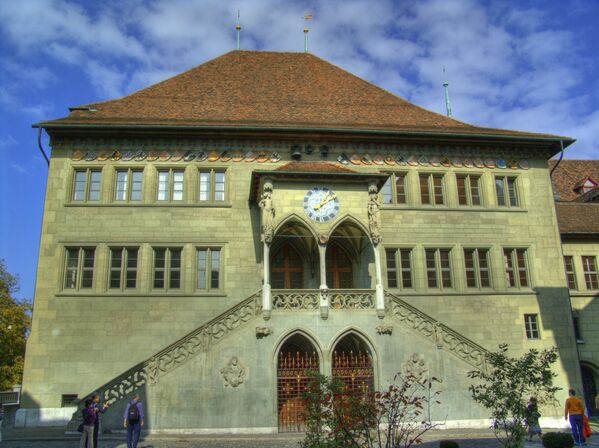
According to tradition, Bern was founded in 1191 by Berchold V as a military post. In 1218, it was made a free imperial city by Emperor Frederick II. Bern grew in power and population and in 1353 joined the Swiss Confederation. When Switzerland was invaded by the French (1798) during the French Revolutionary Wars, Bern was occupied and was stripped of part of its territory. Following the Congress of Vienna of 1814, the city once again became the largest canton of the confederacy. In 1848, Bern was made the Federal City of the new Swiss federal state.
Above: The Rathaus (city hall) in Bern.
Above: The Rathaus (city hall) in Bern.
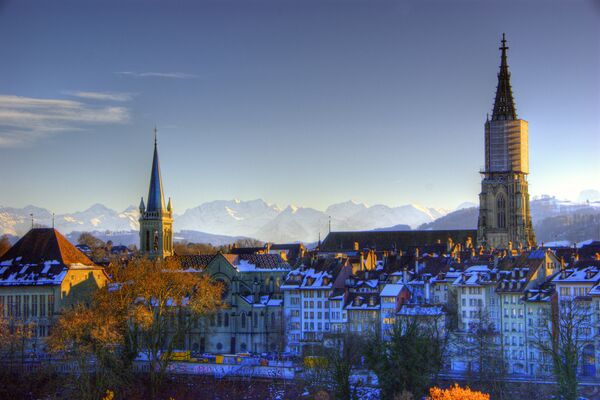
The etymology of the name Bern is uncertain. According to the local legend, based on folk etymology, Berchtold V vowed to name the city after the first animal he met on the hunt, and it turned out to be a bear (Bär in German, plural Bären). For a long time, it has been considered that the city was named after the Italian city of Verona, which at the time was known as Bern in Middle High German. Nowadays, it is more common to think that the city was named after a toponym of Celtic origin – bren or brena (cleft). The bear was the heraldic animal of the seal and the coat of arms of Bern from the 1220s.
Above: A view of Bern, Switzerland.
Above: A view of Bern, Switzerland.
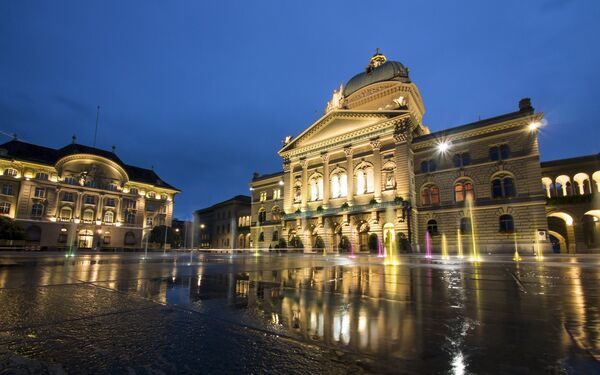
Bern is characterized by its numerous fountains and is sometimes referred to as the "city of fountains". There are more than 100 of them in the city, 11 of which still retain their original appearance and three remain from the 16th century.
Above: The Bundesplatz in front of the federal palace (and the national bank to the left) in Bern, Switzerland, shot this evening during twilight.
Above: The Bundesplatz in front of the federal palace (and the national bank to the left) in Bern, Switzerland, shot this evening during twilight.
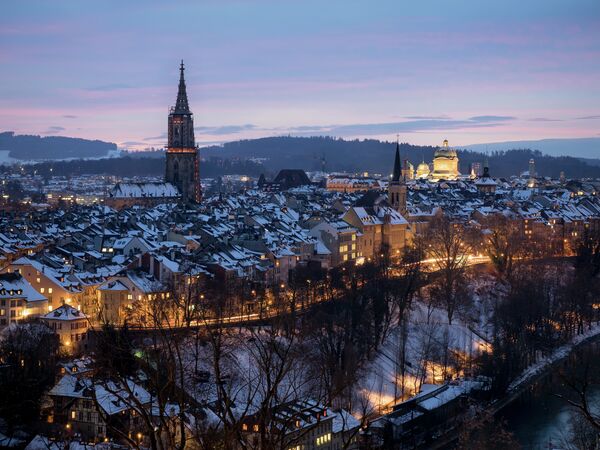
The city is largely medieval in its architecture. It is home for a total of 114 Swiss heritage sites of national significance. The city has a splendid 15th-century town hall and numerous other historic structures. There are many picturesque patrician houses and old guild halls. Tourists can find many of them in the historic old town in the center of Bern. In 1983, it became a UNESCO World Heritage Site.
Above: A photo of the old city of Bern, Switzerland, taken from the Rosengarten Park.
Above: A photo of the old city of Bern, Switzerland, taken from the Rosengarten Park.
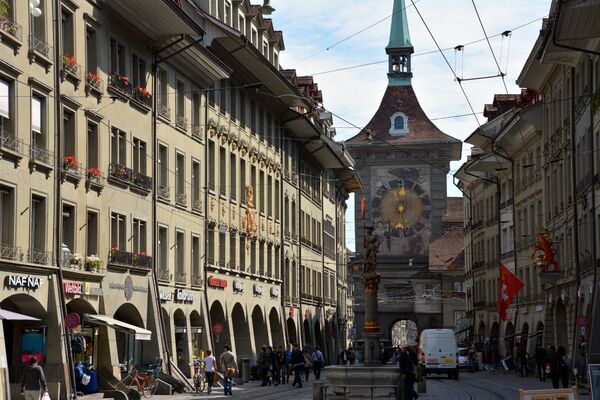
The Zytglogge tower is one of Bern’s landmark medieval structures. II was built in the early 13th century. Throughout its history, it has served the city as guard tower, prison, clock tower, and civic memorial. The tower has an elaborate 15th-century astronomic clock with moving puppets. The Zytglogge is one of Bern’s most recognizable symbols and a major tourist attraction.
Above: The Zytglogge clock tower and city's medieval covered shopping promenades (Lauben).
Above: The Zytglogge clock tower and city's medieval covered shopping promenades (Lauben).
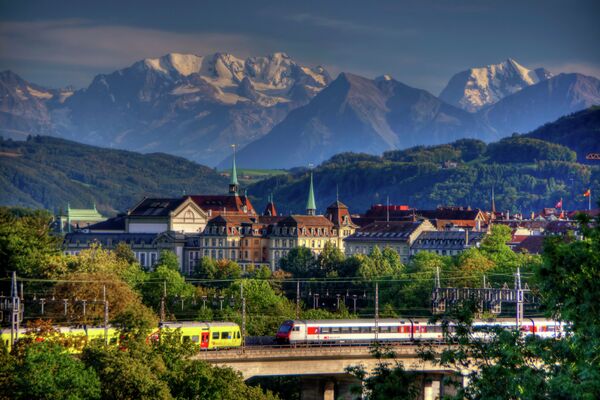
More modern buildings include the 19th-century federal parliament building, many fine museums (including one devoted to Paul Klee), and the university (1834).
Above: A view of Bern, Switzerland.
Above: A view of Bern, Switzerland.
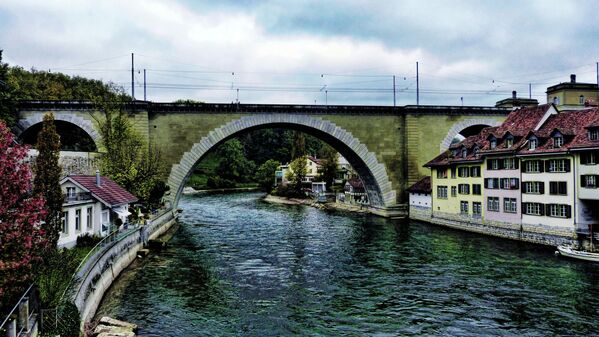
Albert Einstein worked out his theory of relativity while living in Bern from 1903 to 1905 while employed as a clerk at the patent office. Today visitors can see what he called home at the Einsteinhaus (Einstein’s house) which is a great tourist attraction.
Above: A view of Bern, Switzerland.
Above: A view of Bern, Switzerland.

